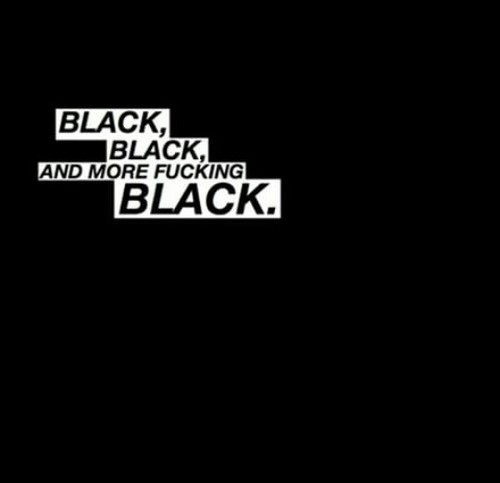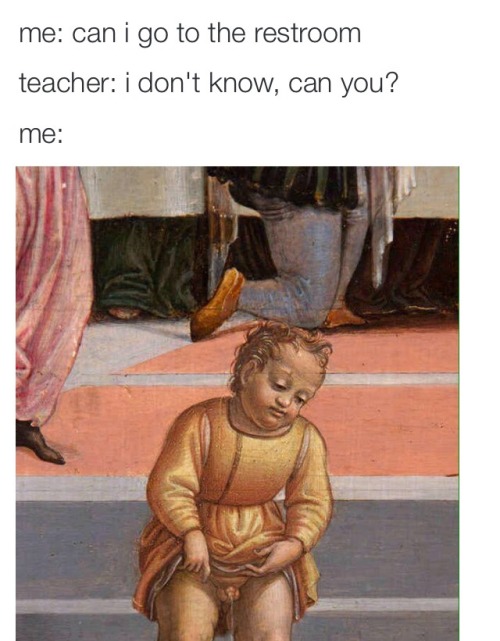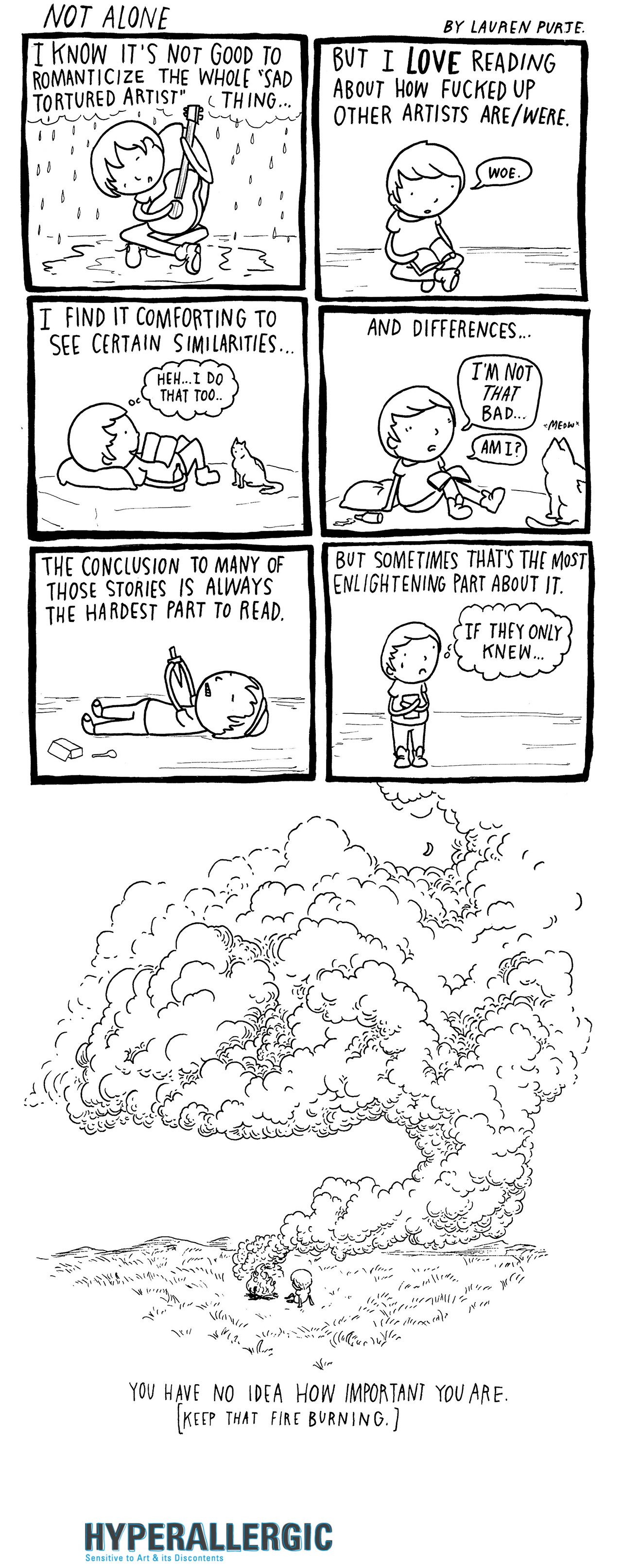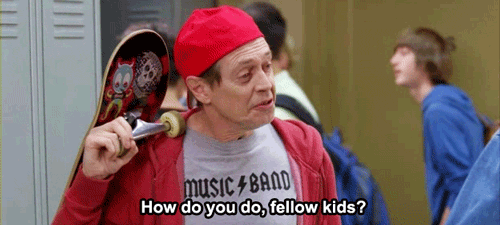Our society’s ideas concerning paedophilia and the paedophile are wrong in almost every respect. What follows addresses some of these misconceptions. The author wishes to make it clear that whilst he supports reform of the law, he neither recommends, or wishes to incite, violations of any existing laws.
Introductory remarks
1. Paedophiles are not like normal people.
2. Someone who rapes a child or manipulates one into having sex is a paedophile.
3. Paedophiles are unable to control their urges, and shouldn’t be allowed to work, or have contact, with children.
4. Paedophiles wish to impose ‘adult sexuality’ on the children.
5. Paedophiles seek to have power over children.
6. Paedophiles don’t love children but just want them for sex.
7. Being a paedophile is a matter of choice.
8. Paedophiles can’t manage it with women & choose children as an easy option.
9. Paedophiles ‘groom’ children.
10. Children don’t like paedophiles.
11. A sexual relationship with an adult is invariably harmful to the child.
12. An intimate relationship with an adult must bring ‘the worst’ out of a child.
13. Paedophiles have below average IQ and are uneducated.
14. Paedophiles will end the relationship once adolescence is reached.
15. Paedophilia is wrong because a child cannot consent to sex.
16. Paedophilia is wrong because a child cannot give informed consent|informed consent to sex.
17. Children cannot be interested in sex or intimacy with an adult.
18. Paedophiles are ‘immoral’.
First let’s consider how the popular discourse has come to be so far adrift from reality on an issue that so preoccupies it.
It is not unusual for a community to be grossly mistaken about an issue with which it is intensely preoccupied. Examples are the Nazi’s understanding of Jews, McCarthyite America’s ideas about communists, the ‘Satanic Ritual Abuse’ scandals of the 1980s, and Puritan New England’s ideas about ‘witches’.
Common to all of these examples is that the threat of stigma, ostracism, violence and death, and the collateral suffering of their family and friends, renders the groups that are the focus of fear invisible, and unable to speak out when something inaccurate is said about them. Also any non-member of these groups who dares defend them or advocate more humane attitudes towards them also runs similar risks.
Once there are no longer any voices that can correct mistaken ideas, the public imagination becomes over-heated : assumption trumps knowledge; rumour, conjecture and fantasy (generally drawing on the worst that can be imagined) become ‘facts’; the worst actions of individual members of the persecuted group become seen as ‘typical’ behaviour for the whole group; the language used around the issue no longer fits what it purports to describe, becomes dishonest, hysterical, and twisted out of shape (see n° 2 on the use of the word ‘rape’). A positive feed-back loop is established : as the public’s ideas concerning the hated group becoming more and more monstrous, it becomes less and less possible for anyone to say anything that could correct or moderate those ideas.
This is the situation in which the average paedophile finds himself today. He he doesn’t recognise the libidinous, violent, manipulative monster that society tells him he is. But he is unable speak out and correct this disparity between what is said about him and what he knows to be true. And so the myths remain unchallenged.
Surprisingly little scientific research has been done on the subject of paedophiles. Nearly all studies are based on people found guilty of some crime against children, usually prisoners. Such studies don’t discriminate between ‘paedophiles’ and ‘non-paedophiles who’ve offended against children’ (see n° 2). Such research can tell us nothing about ‘paedophiles’. The experiences and viewpoints of non-convicted paedophiles rarely reach popular discourse and debate. It is also impossible, given the climate of fear, to access a large enough random sample of non-convicted paedophiles for any research to be reliable. It is also very hard for academics to find funding for research which doesn’t have an a priori condemnatory agenda, or which explicitly (or even ‘implicitly’) questions the common assumptions surrounding paedophilia.
It is with this in mind that I have compiled this short list addressing some of the more common misconceptions concerning paedophiles and paedophilia. Where does this information come from? Some comes from research (I’ve tried to acknowledge the sources), much from my own experience, and much from conversations and exchanges on various help and support networks found on the web.
N.B. the word ‘paedophilia’ is often confounded with ‘hebephilia’ (attraction to early adolescents) and ‘ephebophilia’ (attraction to mid-to-late adolescents). The following comments concerned ‘paedophilia’ in its strictest sense (i.e. an attraction to prepubescents), though many comments also apply to hebephilia and ephebophilia.
1. Paedophiles are not like normal people
Paedophiles are people who one day find themselves to be sexually attracted to children. This is the only thing that sets paedophiles apart from ‘normal’ people. Otherwise they are essentially no different from any cross-section of the citizenship: they enjoy friendships with their peers, have interests that have nothing to do with their sexuality, love their families, do normal jobs, have normal ambitions, pursue their education, listen to music, watch films, do sport… Nor is this ‘normality’ a ‘front’ they use to ‘blend into society in order to perpetrate their crimes’.
For most people the idea of the “paedophile” automatically evokes words such as ‘sick’, ‘predator’, ‘child abuse’ and ‘manipulation’. Undoubtedly there are paedophiles who abuse and manipulate children sexually, who prey on them. They are as small a minority amongst the general paedophile population as are rapists amongst heterosexual teleiophiles (someone sexually attracted to adults).
What follows is an argumentum ab optimo i.e. an argument based on a best-case scenario. I am unapologetic about this because the popular discourse has exclusively been conducted as an argumentum a pessimo i.e. an argument based on the worst aspects and instances that can be found and imagined. If one were to imagine a scale between the ‘worst’ and the ‘best’ vision of paedophilia the evidence seems to be that the typical paedophile hopes for, aspires to and represents something approaching ‘the best’ rather than ‘the worst’. Moreover to remind you of the worst would be to merely reproduce the misconceptions and distortions which are the only narrative available in popular discourse.
2. Someone who rapes a child or manipulates one into having sex is a paedophile.
Most rapes on children are committed by i/ non-paedophiles who find themselves depressed, intoxicated, tired or otherwise disoriented, and are ‘surprised’ by an unfamiliar desire which they have not previously had to learn to control (see n° 3), or ii/ ‘opportunistic’ offenders who direct their adult sexuality at whatever target is available. The exercise of power that is the essence of rape goes against the mindset of the typical paedophile, whose interest is in a relationship in which the child enjoys the intimacy and has equal agency and power (see n° 5).
This explains why it has been estimated that only 2 – 10% of child sexual abuse perpetrators meet the regular criteria for paedophilia (Kinsey-Report, Lautmann, Brongersma, Groth). To the normal paedophile the idea of causing a child distress, pain or to be afraid is absolute anathema.
The water is further muddied by an increasing tendency of the law, the popular imagination and the media to label any sexual, or even just ‘sensual’, interaction between a child and an adult as ‘rape’ or ‘statutory rape’, even if the interaction only consists of light, consensual touching. This is one of many examples of how the language used around this issue has broken down, no longer fitting what it purports to describe (see introductory comments).
3. Paedophiles are unable to control their urges, and shouldn’t be allowed to work, or have contact, with children.
Most paedophiles are celibate, satisfying their love through non-contact means. The punishments and repercussions that the slightest loss of self-control could entrain are so great that, to survive in contemporary western society, the paedophile must control his desires to a much greater degree than do teleiophiles.
Many paedophiles who enjoy a close friendship with a child will choose not to allow that relationship to become sexual, out of an awareness of the trauma and stigma the child would experience if the sexual activities were discovered. And out of an awareness that the child, once adult, because of the strong condemnation and stigma society directs at child/adult intimacy, may re-interpret such activities, though happily and consensually engaged in at the time, as having been ‘abuse’ (see n° 11, and n°s 15 and 16 regarding ‘consent’).
Consequently the great majority of paedophiles pose no actual threat to children they work with. Moreover paedophiles often make the best youth workers, teachers, coaches etc. because their sexuality offers them a deeper interest in, understanding of and sympathy with children than is generally found amongst non-paedophiles.
4. Paedophiles wish to impose ‘adult sexuality’ on the children.
One of the fallacious uses of language common in the popular discourse round this issue is to talk about paedophiles wanting, or having, ‘Sex’ with children. To most non-paedophiles ‘sex’ means ‘intercourse’ and so by a leap of logic the public thinks of paedophiles as wanting to have intercourse with children. This is wrong. What the typical paedophiles think of as ‘sex’ differs from what adult teleiophiles consider as ‘sex’.
The most important difference is that any form of penetration cannot have the same place it has in adult-adult relationships : the typical paedophile would not wish to do anything that the child would not enjoy, be hurt by or that would betray the trust and friendship shared by the adult and child. Essentially what most turns on a paedophile is a happy, relaxed child who is herself turned-on.
Rather than the adult imposing his desires on the child it is very much about allowing the child to determine what takes place and responding to the child’s interest, – much as an adult playing football with a 7-year old adapts his mode of play to ensure that the experience is enjoyable and constructive for the child so does a caring paedophile.
‘Sexual’ activities range from ‘sensuality’ (tickling, kissing and stroking…) to acts that would be classed as ‘foreplay’ in the context of adult-adult sex.
5. Paedophiles seek to have power over children.
The child/paedophile relationship is one of the very few in which the adult and the child are equals. Unlike a child’s relationship with her parents, teachers, policemen, social workers etc. the child can end the relationship. She can even reveal it to her parents or other authorities, if she is not happy. The paedophile will care deeply about the child’s opinion of him and about the child’s needs, feelings and opinions. Generally paedophiles find a deep satisfaction and happiness in the equality of their relationship.
6. Paedophiles don’t love children but just want them for sex.
Paedophiles can fall as deeply in love with a child as adults do with other adults. Even non-paedophiles will acknowledge that a child can be beautiful, sweet, charming, and delightful, and will have memories of being in love with a child from when they themselves were children. Is it really so ridiculous to find oneself, as an adult, thoroughly enchanted by a child?
The fact that society finds it so hard to imagine that an adult could experience an intense, non-parental love for a child indicates the low esteem and value that society places on children as humans with distinct self-hoods. Children are as much ‘people’ as adults,and as such it shouldn’t be thought ridiculous that someone could appreciate and love them for their individual qualities and character.
7. Being a paedophile is a matter of choice.
Given the all-pervasive misunderstanding and misrepresentation in the media and public discourse, given the stigma, the hatred, the risk of violence, prison and even death, why would anyone actually choose to be a paedophile? Generally being a paedophile either entails a life of fear at having one’s love detected if one is in a relationship, or a life of celibacy, restraint and frustration. Many paedophiles, because of this, try to become ‘normal : most succeed in leading a ‘normal’ life, but few, if any, manage to change the nature of their desires.
8. Paedophiles can’t manage it with women & choose children as an easy option.
Most paedophiles are not exclusive in their sexuality, being also attracted to women and/or men. Many marry and have families.
Nor is a relationship with a child an ‘easy option’ – over and above all the pressures and dangers imposed by society and the law (see n° 7), any parent or teacher will tell you that children can be very demanding, tiring and challenging.
For what it’s worth, and speaking purely for myself, the secondary sexual characteristics of an adult woman (breasts, full hips, pubic hair…) provoke a stronger sexual response in me than does a naked little girl. The feelings that a little girl arouse in me are rather ones of tenderness, nurturing, delight, love and affection. There is little of any, strictly speaking, sexual element in these feelings.
The reader may then ask what distinguishes me from any ‘normal’ male with strong nurturing feelings towards children? The answer is that I believe and feel that there can be some sensual, or even sexual, element in the expression of those nurturing feelings, and that there is no intrinsic harm in this, provided that the child wishes it and the interaction is consensual (see n° 4 and n°s 15 and 16 regarding ‘consent’).
9. Paedophiles ‘groom’ children.
“Grooming is a word in search of a meaning, an essentially empty propaganda concept. It is just a way of talking about a pleasant thing – spending time with a child you like and finding they enjoy your company too, with a growing bond of mutual affection and trust – and making it sound nasty, reducing it to a cynically exploitative exercise.” Tom O’Carroll – (https://tomocarroll.wordpress.com)
Granted that a small minority of paedophiles may treat children nicely with the intent of seducing them. But the great majority act this way for the same reason as most non-paedophiles do : simply because they like or love the child. Moreover much of what is described as ‘grooming’ in the popular press amounts not to ‘spoiling’ and ‘indulging’ the child – but to respecting and taking the child seriously. This fact leads on to the following point:
10. Children don’t like paedophiles.
Even ‘child protection’ literature repeats that it’s often the person who is good with children, whom children love, who is the ‘threat’, whom parents should ‘watch out for’. Children, like all other humans, like and are attracted to people whom they feel loved, liked and appreciated by.
11. A sexual relationship with an adult is invariably harmful to the child.
Outside the context of our particular society and its hang-ups, trans-generational intimacy, sensuality and sex is not of itself harmful, and is probably beneficial.
In the context of our society it is however often harmful : if the relationship isn’t discovered there’s the secrecy and possible guilt; if it is discovered then there are the distraught parents acting treating the child as if she has been ‘damaged’, the anxious relatives, the vilification of the girl’s lover, the police interrogations, the doctors’ physical examinations, the court case, the psychologists etc.; then the gradual learning over the years that ‘society’ now considers her as a ‘victim’, as having had her innocence and ‘soul’ stolen, that she is now some kind of freak.
This reaction happens whether the child was brutally rapaed, or whether some favourite uncle had just once gave her a little tickle between her legs when she was sat on his lap. (see “The Trauma Myth” by Susan A. Clancy Ph.D. – Perseus books).
However, many good and caring relationships are not discovered (and it’s generally the consensual and equal relationships, which both partners have a lot of interest in maintaining, that manage this) and flourish, despite the adverse context.
12. An intimate relationship with an adult must bring ‘the worst’ out of a child.
As n° 8 mentions above : children can sometimes be demanding, tiring and challenging. However, as any teacher or psychologist will confirm, children treated with respect, who feel liked and appreciated, behave better and more maturely than those who feel disliked and are treated with disrespect. The friendship is a true partnership of equals (see n° 5 above). paedophiles love and admire their little friends, and treat them with a respect that children are unaccustomed to receive from adults. Children engaged in a friendship with a paedophile will often flourish, regardless of whether the relationship has a sexual element or not.
13. Paedophiles have below average IQ and are uneducated.
Some studies seem to indicate this (see Cantor). But as these are based on prisoners, who on average have lower IQs than the general population, these statistics are meaningless (see introductory comments).
Moreover these studies don’t control for the effects of being subjected to long term stigma and ostracism – both of which can lead to depression and other mental difficulties.
Some well-known paedophiles include : Lewis Carroll, Edgar Allan Poe, Alexander the Great, Caravaggio, Leonardo da Vinci, Allen Ginsberg, Michael Jackson, Mohammed, Gandhi, John Ruskin, J.M Barrie, Benjamin Britten, Arthur C. Clarke, Mark Twain, Richard Hughes, Francis Kilvert, Eric Gill, L.S. Lowry, T.H. White, William van Gloeden, Ernest Dowson, John Cowper Powys, T.E. Lawrence, Wilfred Owen.
14. Paedophiles will end the relationship once adolescence is reached.
Most paedophiles are non-exclusive in their sexual preferences (see n° 8) and will not lose interest in their partner at the onset of adolescence. What can happen is that the child in the relationship loses interest in the adult and, as so often happens at puberty, becomes focused on people of her own age. In these cases any sexual element in the relationship usually stops, though the friendship and closeness often remains.
15. Paedophilia is wrong because a child cannot consent to sex.
‘Consent’ in sex is not a one-off preliminary agreement but a process: something that is renewed or withheld at every stage of the interaction : adults don’t break off from kissing to ask “do you consent to progress to light foreplay?” – no, the consent is signaled through enjoyment of the activity and an eagerness to progress. A show of unwillingness or lack of enjoyment signals withdrawal of consent,and the activity stops.
Children are very good at knowing what they want and don’t want, like and don’t like. If you’ve ever tried to persuade a reluctant child to eat its sprouts, or offered a child an ice-lolly on a hot summer’s day you will see how capable children are of consenting. Likewise with intimacy and sensuality : a child can make it perfectly clear, either verbally or with body-language, whether or not she is enjoying and feeling comfortable with what she is doing. An ethical paedophile, like any good lover, will be alert to such signals and respond appropriately.
Ironically it seems that the paedophile-child relationship is maybe the only adult-child relationship where consent is crucial and central to the success and continuation of the relationship. Think of the relationships between children and parents, teachers, social workers, police etc. : in none of these relationships is the child’s ‘consent’ required or taken seriously. This is one of several factors in the paedophile-child relationship that leads to an equality of power that is not found in other adult-child relationships. (see n° 5)
16. Paedophilia is wrong because a child cannot give informed consent|informed consent to sex.
A child may not know much about sex and intimacy but if they engage willingly and enthusiastically in an intimate relationship with an adult they are certainly showing an eagerness to become ‘informed’. Moreover some children are quite well informed about sex, either from being brought up in a context open about sex or from having previous experiences either with other children and/or adults.
Society normally encourages this progression from ‘ignorance’ to ‘knowledge’, this ‘eagerness to become informed’, calling it ‘learning’ and ‘education’.
However when it comes to ‘sex and sensuality’ society does all it can to maintain children in a condition of ignorance, of being ‘uninformed’. It then raises the idea that they are ‘uninformed’ as an objection to them satisfying their natural curiosity and desires.
17. Children cannot be interested in sex or intimacy with an adult.
More than 100 years after Freud published “Three Essays on the Theory of Sexuality”;, and after a wealth of anthropological studies conducted amongst Trobriand Islanders, Inuit, Namibian Bushmen, after explorers’ reports from the Marquesas and Tahiti – all of which describe societies in which displays of child sexuality and intergenerational sexual relations were common and accepted – western society is still desperately trying to persuade itself that children are not sexual beings.
But why is that we have to go to far away societies from another time to find admissible evidence of child sexuality? Where is the evidence that children can be attracted to adults in contemporary western societies? The evidence exists, but its expression and communication has been ‘silenced’.
Who in our society has knowledge and experience of child sexuality? Parents (who too often teach their children ‘shame’ so that by the age of 5 or 6 most children are fully aware that ‘sex’ is a taboo subject about which their parents are not willing to be open)? Teachers, police, doctors, psychologists, social workers? Which of these could a child be sufficiently at ease with to express their sexuality towards? The answer is, of course, ‘none of these’.
The fact is that in our society it’s only the ‘paedophile’ who accepts child sexuality; who, when a child displays sexual behaviour, doesn’t react negatively, doesn’t shame the child, doesn’t make her feel that her sexuality is ‘bad’. Even celibate paedophiles often have the experience of being the object of a child’s sensual or sexual interest.
Society and the Law, by criminalising the means by which such knowledge could be gathered, have, a priori, defined any evidence which disagrees with the orthodoxy as ‘inadmissible’ – thus depriving society, sociology, psychology and the law of the possibility of insights into the important subject of child sexuality, and hereby maintaining the belief that children are not sexual or interested in sex.
18. Paedophiles are ‘immoral’.
Can one only be truly ‘moral’ if one has never had to think about, struggle with and reflect deeply about one’s own capacity to do right or wrong? Someone who has never found them self at odds with the moral currents of society is someone who has never had to think deeply about what constitutes ethical living.
Most paedophiles go through a great deal of agonizing and soul-searching – and the evidence for this can be clearly seen by listening-in to the ethical conversations, debates and arguments that are a principal feature of clearnet paedophile support forums.
GirlChat – http://annabelleigh.net/
boy chat – http://www.boychat.org/
Le jardin d’Alice – http://jardin.glgarden.org/













































